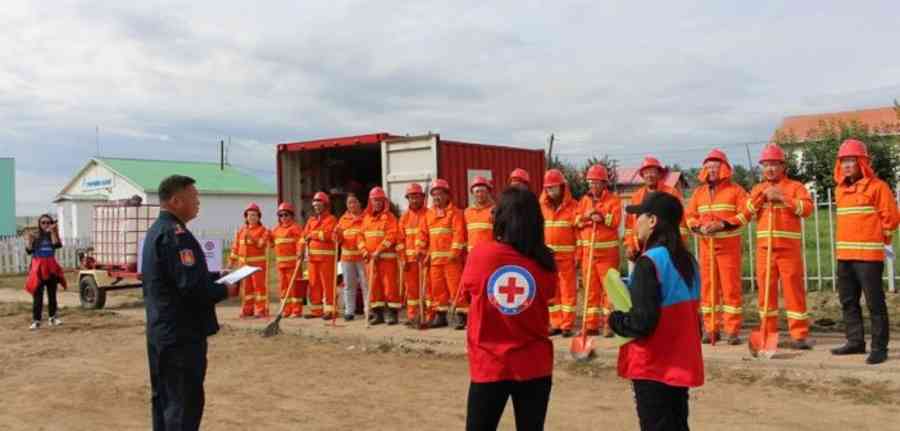Strengthening disaster risk management through institutional development
Mongolian Red Cross Society is committed to reduce disaster risk by building resilience through community based approach in both rural and urban areas. Mongolian Red Cross will strengthen capacity of 4 local Red Cross branches within the project framework.
Description
The project aims to ensure respective 4 local Red Cross branches are well prepared for any type of hazard. The project includes a series of training for volunteers in which local emergency teams are established and equipped with necessary tools to respond against local hazards and the emergency teams are provided with expertise by local emergency agency ensuring safety of the volunteers. 4 local branches will also have adequate relief stock pre-positioned ensure they're able to respond with no time delay. The project will address the financial management of the branch by updating their financial system software enabling local branch to have better management of their financial management. At last, the humanitarian halls will be established at 4 local high-schools in 4 provinces where children are treated with psycho-social support when needed and will be functioning as the point where disaster information (flyers, brochures...) is disseminated.
Did the Sendai Framework change or contribute to changes in your activities/organization? If so, how?
Yes, Sendai Framework encourages investing in disaster risk reduction for resilience and Mongolian Red Cross will promote disaster risk resilience through structural, non-structural and functional disaster risk prevention and reduction
measures in critical facilities, in particular schools and physical infrastructures.
What led you to make this commitment/initiative?
What was your position before making this Voluntary Commitment / prior to the Sendai Framework?
Mongolian Red Cross had been implementing community based disaster risk reduction activities in both rural and urban areas through its branches and volunteers even before Sendai framework but after Sendai framework, local programmes and activities have been more encouraged by local and international organizations, individuals. Considering that, overall, the Sendai Framework encourages better articulation of responsibilities among State and non-State actors as well as the involvement and empowerment of local actors (with resources, incentives, decision making responsibilities, etc.
Deliverables and Progress report
Deliverables
Deliverables are the end-products of the initiative/commitment, which can include issuance of publications or knowledge products, outcomes of workshops, training programs, videos, links, photographs, etc.
4 Red Cross branch have installed unified financial management system and have trained human resource for utilization for transparent and accountable reporting. A narrative report with photos will be available after the implementation.
4 humanitarian halls at 4 local high-schools across 4 provinces will be established. Humanitarian halls will be used if the child needs a psycho-social support or learn about disaster risk reduction, even about Red Cross and Red Crescent movement. A narrative report with photos will be available after the implementation.
4 Red Cross branches have pool of trained staffs and volunteers and enhanced capacities to become local partner of choice, in disaster preparedness and response activities and enhanced cooperation with the local emergency management agencies. 60 volunteers will be trained as a volunteer in emergency and after each training, a registry list of the participants and narrative report will be made.
4 Red Cross branches updated their disaster contingency plan based on National Society's branch disaster response capacity assessment tool and in line with National contingency plan. A narrative report and photos will be available after the implementation.
Porgress report
60 branch disaster response team members from Dornod, Govi-Altai, Bayankhongor, Darkhan-Uul provinces have been trained in first aid, volunteering in emergencies, psycho-social support, water, sanitation, hygiene. Those Red Cross branches now use unified financial software and accountants have been trained to use the software. Those branches have updated their contingency plan and 2 regional disaster preparedness centers have received relief items to provide in emergencies.
-Red Cross branch human resource have been strengthened.
-Financial management capacity and transparency have been increased.
-Regional disaster preparedness centers have more capacity to provide relief items.
-Red Cross branches have updated contingency plans.
Organizations and focal points
Implementing Organization(s)
Focal points
